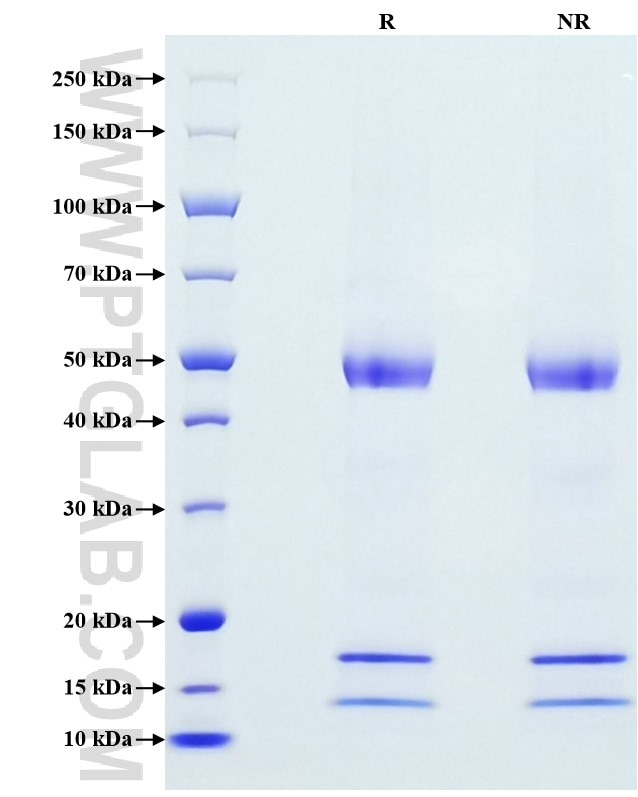Recombinant Human Osteopontin protein (His Tag)
Species
Human
Purity
>80 %, SDS-PAGE
Tag
His Tag
Activity
not tested
Cat no : Eg0754
Validation Data Gallery
Product Information
| Purity | >80 %, SDS-PAGE |
| Endotoxin | <0.1 EU/μg protein, LAL method |
| Activity |
Not tested |
| Expression | HEK293-derived Human Osteopontin protein Ile17-Asn300 (Accession# P10451-5) with a His tag at the C-terminus. |
| GeneID | 6696 |
| Accession | P10451-5 |
| PredictedSize | 33.2 kDa |
| SDS-PAGE | 13 kDa, 17 kDa, 45-50 kDa, reducing (R) conditions |
| Formulation | Lyophilized from 0.22 μm filtered solution in PBS, pH 7.4. Normally 5% trehalose and 5% mannitol are added as protectants before lyophilization. |
| Reconstitution | Briefly centrifuge the tube before opening. Reconstitute at 0.1-0.5 mg/mL in sterile water. |
| Storage Conditions |
It is recommended that the protein be aliquoted for optimal storage. Avoid repeated freeze-thaw cycles.
|
| Shipping | The product is shipped at ambient temperature. Upon receipt, store it immediately at the recommended temperature. |
Background
Osteopontin (OPN), also known as SPP1, is a secreted glycophosphoprotein that belongs to the small integrin-binding ligand N-linked glycoprotein (SIBLING) family. Originally isolated from bone, OPN has been found in kidneys, vascular tissues, biological fluids, and various tumor tissues. OPN can interact with CD44 and integrins and regulate diverse biological processes. It has a multifaceted role in bone development and remodeling, and is also involved in the inflammatory and immune response, oncogenesis and cancer progression.
References:
1. Rittling SR, Chambers AF. Br J Cancer. (2004) 17;90(10):1877-81. 2. Rangaswami H, Bulbule A, Kundu GC. Trends Cell Biol. (2006) 16(2):79-87. 3. Icer MA, Gezmen-Karadag M. Clin Biochem. (2018) 59:17-24. 4. Jia Q, Ouyang Y, et al. Lung. (2024) 202(1):25-39. 5. Tang Z, Xia Z, et al. Cytokine Growth Factor Rev. (2023) 74:86-99.

